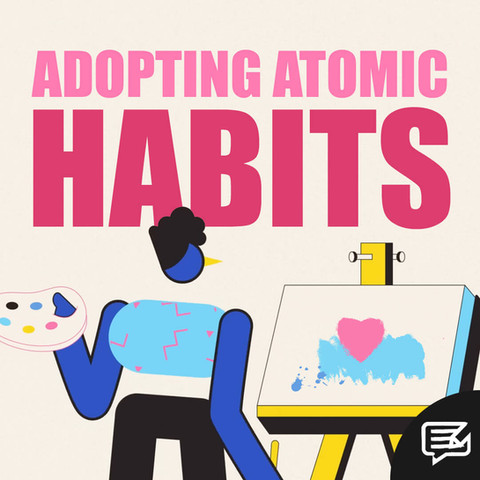
31.10.20
CLIMATE CHANGE & MACHINE LEARNING
You’ve watched David Attenborough shows. You’ve listened to Greta Thunberg speak. You’ve read about international initiatives instigated to combat it. Climate change is all around us. Literally.
The highest ever UK temperature was recorded on 25th July 2019 in the Cambridge University Botanic Garden. It’s no coincidence that it’s so recent. Global warming is transforming the environment as we know it and, if we don’t act now, will continue to do so with the direst of consequences.



The epic journey through frozen wasteland endured by Dennis Quaid’s character in the 2004 blockbuster The Day After Tomorrow will look like a walk in the park in comparison…
But there is hope is the form of machine learning.
Climate Change AI explains:
“Climate change is one of the greatest problems society has ever faced, with increasingly severe consequences for humanity as natural disasters multiply, sea levels rise, and ecosystems falter.
“While no silver bullet, machine learning can be an invaluable tool in fighting climate change via a wide array of applications and techniques. Climate Change AI aims to facilitate work at the nexus of climate change and machine learning.”
In 2019, some of the biggest names in AI research - including representatives from Harvard, Cornell and Stanford Universities, Microsoft Research, Deepmind and Google AI - published a 111-page proposal on how machine learning can be applied in the fight against climate change, through either effective engineering or innovative research.
The report opens:
“The effects of climate change are increasingly visible. Storms, droughts, fires and flooding have become stronger and more frequent. Global ecosystems are changing, including the natural resources and agriculture on which humanity depends. The 2018 intergovernmental report on climate change estimated that the world will face catastrophic consequences unless global greenhouse gas emissions are eliminated within thirty years. Yet year after year, these emissions rise.”
Tackling climate change relies on two tactics: reducing emissions (known as “mitigation”) and preparing for unavoidable consequences, or “adaptation”. Both are complicated, multifaceted issues.
The paper continues:
“In recent years, machine learning has been recognized as a broadly powerful tool for technological progress. Despite the growth of movements applying ML and AI to problems of societal and global good, there remains the need for a concerted effort to identify how these tools may best be applied to tackle climate change. Many ML practitioners wish to act, but are uncertain how. On the other side, many fields have begun actively seeking input from the ML community.”
Whilst it’s a relief to read that climate change is front of mind amongst the brilliant brains of the ML and AI community, it’s also terrifying. To read – in the year 2019 – that many ML practitioners are uncertain of how to act does not buoy one’s spirits. Rather, they’re in the same boat as the rest of the general populace: aware of the metaphorical civilisation-ending meteor heading our way, but clueless on how to stop it…
Thankfully, the ensuing report demonstrates that they are anything but clueless.
The paper outlines potential interventions across 13 domains, from electricity systems, transportation and buildings to carbon dioxide removal, climate prediction and solar geoengineering. Each is then broken down into the relevant sub-disciplines within machine learning, such as computer vision, natural-language processing (NLP) and time-series analysis. It’s certainly not a paper to dip in and out of with a cup of tea and a digestive biscuit, that’s for sure!
Helpfully, each recommendation is further divided into categories:
High leverage
Denotes bottlenecks that domain experts have identified in climate change mitigation or adaptation and that we believe to be particularly well-suited to tools from ML
Long-term
Denotes applications that will have their primary impact after 2040. While extremely important, these may in some cases be less pressing than those which can help act on climate change in the near term
Uncertain impact
Denotes applications where the impact on GHG emissions is uncertain, or where there is potential for undesirable side effects
Almost like an Impact / Effort Matrix, but with added urgency.
Of the “high leverage” recommendations, the following intrigued me the most:
ELECTRIC VEHICLES
“Electric vehicle (EV) technologies – using batteries, hydrogen fuel cells, or electrified roads and railways – are regarded as a primary means to decarbonize transport. EVs can have very low GHG emissions – depending, of course, on the carbon intensity of the electricity. ML is vital for a range of different problems related to EVs.”
Machine learning methods can help to model travel and charging behaviours, manage congestion, and improve battery performance - including vehicle-to-grid technology (whereby vehicles act as an energy store for the power grid when not in use).
SMART BUILDINGS
“Intelligent control systems in buildings can decrease the carbon footprint both by reducing the energy consumed and by providing means to integrate lower-carbon sources into the electricity mix. Specifically, ML can reduce energy usage by allowing devices and systems to adapt to usage patterns. Further, buildings can respond to signals from the electricity grid, providing flexibility to the grid operator and lowering costs to the consumer.”
From small appliances such as refrigerators and lightbulbs to heating and cooling (HVAC) systems, machine learning can significantly improve efficiency. By taking data from occupancy sensors, WiFi signals, or appliance data, unnecessary energy consumption can be dramatically reduced.
So, whilst the sensor-controlled lights in your workplace toilets may not feel like a world-saving initiative, just imagine the impact it could have if every single office, shop and home adopted similar systems. Makes you think, doesn’t it?
DATA FOR SMART CITIES
“Increasingly, important aspects of city life come with digital information that can make the city function in a more coordinated way… Hard sensing is the primary data collection paradigm in many smart city applications, as it is adapted to precisely meet the application requirements. However, there is a growing volume of data coming from soft sensing, due to the widespread adoption of personal devices like smartphones that can provide movement data and geotagged pictures.”
How the data generated from soft sensing can be used, however, is often a grey area. Privacy considerations are - quite rightly - of paramount importance, and pose a significant challenge to the effectiveness of machine learning initiatives.
To overcome this issue, Los Angeles now require all mobility as a service (MaaS) providers – such as vehicle-sharing companies - to use an open source API, thereby transmitting data on location, use and condition of the vehicles back to the city.
REDUCING FOOD WASTE
"Globally, society loses or wastes 1.3 billion metric tons of food each year, which translates to one-third of all food produced for human consumption. In developing countries, 40% of food waste occurs between harvest and processing or retail, while over 40% of food waste in industrialized nations occurs at the end of supply chains, in retail outlets, restaurants, and consumers’ homes.
"ML can help reduce food waste by optimizing delivery routes and improving demand forecasting at the point of sale, as well as improving refrigeration systems. ML can also potentially assist with other issues related to food waste, such as helping develop sensors to identify when produce is about to spoil, so it can be sold quickly or removed from a storage crate before it ruins the rest of the shipment."
We can only hope in the not-too-distant future that such technology becomes part of everyday life. Imagine a smart fridge that alerts you when your avocados have reached optimum ripeness… Ok, perhaps that’s a #middleclassproblem too far, but any initiative to reduce unnecessary waste would be a welcome one.
The report offers so much food for thought, I’d highly recommend a read. Whilst primarily targeted at researchers, engineers, entrepreneurs, corporate leaders and governments, the paper also serves to motivate a behavioural change in your average Joe Bloggs, like yours truly. We may not be machine learning experts, but we can still make a difference – and we need to, because not even Dennis Quaid can save us if we don’t!

























































